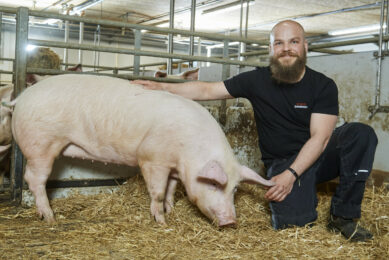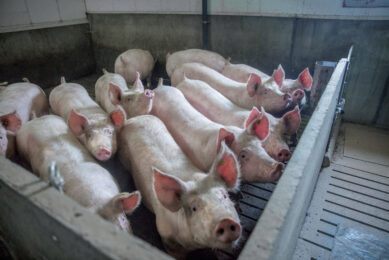Light (IV): Measuring

Textbooks hardly cover light at all, according to our resident expert on ‘Pig management’, John Gadd, therefore he has devoted 4 columns to the topic. This being the last in the series – using the right light meter.
EXPERT
The textbooks I have seen hardly cover light at all. This may account in part why so few commercial breeders measure light in the breeding barn, where in my final article the before-and-after benefits of getting it right are shown. Using a light meter has helped me improve returns to service problems and a lacklustre farrowing index especially during the winter months. And at the other end of light intensity – autumn breeding results, as described last month.
In my last 32 callouts on breeding fallaways since 2003 only 1 breeder was measuring it – and he was measuring it in the incorrect place relative to the position of the sow in the barn – see the figure.
Figure – 5 steps to measure sufficient light

Choosing the right light meter
There are plenty of light meters available, so the task is both quick and easy. I’ve tried two of the low-cost ones (€45-€60) bought off the net, and as well as getting unenthusiastic comments from the expert environmentalists, to whom I should have listened, I have found them rather too delicate to stand up to the dust, dirt and hard knocks in a piggery. Especially being knocked off pen partitions! The much more rugged ones, however, are well over €350.
Redundant photographer’s light meters
Before a light-measuring chip was included in every camera we buy these days, separate light meters based on a photoelectric cell and activating a needle swinging left to right across one of two predetermined scales, were preferred by any serious amateur photographer. Made by Negretti and Sambra, Dollonds etc., these were satisfyingly solid and rugged precision instruments – also expensive at the time.
Previous columns on light
Light (III): 4 proofs that correct levels are vital
Light (II): How much and for how long?
Light (I): Seasonal infertility
However, before they are considered antiques and the price increases again, see if your local camera dealer can find you one. Mine cost as little as €25 at a ‘car boot’. Calibrating it to the maximum and minimum light levels advised in the breeding and farrowing barns and holding it in the correct position in front of the sow’s eyes – see the figure – is very effective, and once calibrated no further alteration is needed, bar the very occasional re-check. Sure, the modern digital displays are very convenient but I’m nervous about the cost, having forgetfully left two behind on farm callouts!











